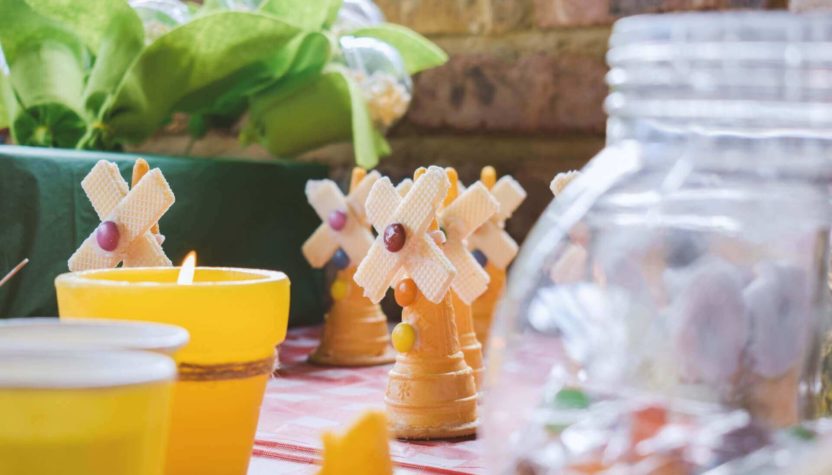A candle is an ignitable wick embedded in wax or another flammable solid substance such as tallow that provides light, and in some cases, a fragrance. It can also be used to provide heat, or used as a method of keeping time.
A candle manufacturer is traditionally known as a chandler.Various devices have been invented to hold candles, from simple tabletop candle holders to elaborate chandeliers.
For a candle to burn, a heat source (commonly a naked flame) is used to light the candle’s wick, which melts and vaporizes a small amount of fuel (the wax). Once vaporized, the fuel combines with oxygen in the atmosphere to ignite and form a constant flame. This flame provides sufficient heat to keep the candle burning via a self-sustaining chain of events: the heat of the flame melts the top of the mass of solid fuel; the liquefied fuel then moves upward through the wick via capillary action; the liquefied fuel finally vaporizes to burn within the candle’s flame.
As the mass of solid fuel is melted and consumed, the candle becomes shorter. Portions of the wick that are not emitting vaporized fuel are consumed in the flame. The incineration of the wick limits the exposed length of the wick, thus maintaining a constant burning temperature and rate of fuel consumption. Some wicks require regular trimming with scissors (or a specialized wick trimmer), usually to about one-quarter inch (~0.7 cm), to promote slower, steady burning, and also to prevent smoking. In early times, the wick needed to be trimmed quite frequently. Special candle-scissors, referred to as “snuffers” were produced for this purpose in the 20th century and were often combined with an extinguisher. In modern candles, the wick is constructed so that it curves over as it burns. This ensures that the end of the wick gets oxygen and is then consumed by fire—a self-trimming wick.
The word candle comes from Middle English candel, from Old English and from Anglo-Norman candele, both from Latin candēla, from candēre, to shine.
The earliest surviving candles originated in Han China around 200 BC, and were made from whale fat. European candles of antiquity were made from various forms of natural fat, tallow, and wax. In Ancient Rome, candles were made of tallow due to the prohibitive cost of beeswax. It is possible that they also existed in Ancient Greece, but imprecise terminology makes it difficult to determine.
In the Middle Ages in Europe, tallow candles were the most common candle. By the 13th century, candle making had become a guild craft in England and France. The candle makers (chandlers) went from house to house making candles from the kitchen fats saved for that purpose, or made and sold their own candles from small candle shops.Beeswax, compared to animal-based tallow, burned cleanly, without smoky flame. Rather than the foul and terrible odor of tallow, it emits a fresh smell. Beeswax candles were expensive, and relatively few people could afford to burn them in their homes in medieval Europe. However, they were widely used for church ceremonies.

